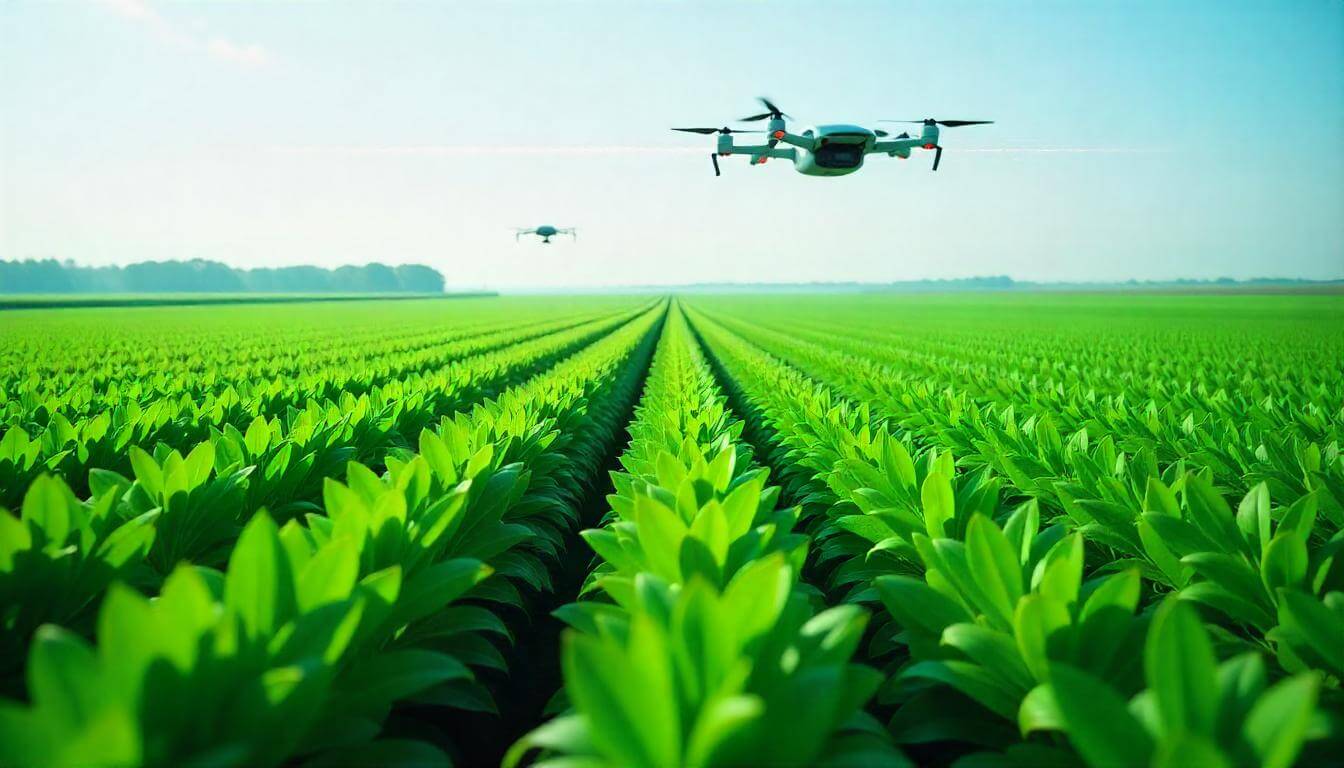Global food demand continues to rise. Climate change impacts agriculture. Farmers face unprecedented challenges. However, technology offers solutions. A recent $70 million investment fuels an Agtech revolution. This initiative promises to sustainably double crop yields. This significant capital infusion could redefine farming practices. Ultimately, it aims to secure a more sustainable future for food production worldwide. We explore the profound implications of this development.
The Urgency for Innovation in Agriculture
The world population keeps growing. Experts predict nine billion people by 2050. This creates immense pressure on food systems. Simultaneously, climate change brings extreme weather. Droughts, floods, and unpredictable seasons threaten harvests. Traditional farming methods often strain resources. They can deplete soil health. They also consume vast amounts of water and chemicals.
Therefore, innovation in agriculture is urgent. Farmers need new tools. They must produce more food with fewer resources. They also need to minimize environmental impact. This situation demands solutions that enhance efficiency. It requires methods that promote sustainability. Thus, the current crisis creates a fertile ground for agricultural technology.
Understanding Modern Agtech: Pillars of Progress
Modern Agtech encompasses diverse technologies. These are central to the current Agtech revolution. Internet of Things (IoT) sensors are a key component. They gather real-time data from fields. This includes soil moisture, nutrient levels, and plant health. Artificial Intelligence (AI) analyzes this vast data. It provides actionable insights. Farmers receive precise recommendations for irrigation or fertilization.
Furthermore, robotics automate repetitive tasks. Drones can monitor crops from above. Autonomous tractors can plant and harvest. Biotechnology offers genetically optimized crops. These resist pests or tolerate harsh conditions. Vertical farming and controlled environment agriculture (CEA) maximize space. They reduce water use. Ultimately, these technologies work together. They create a more efficient and resilient agricultural system.
The $70 Million Investment: A Catalyst for Change
A recent $70 million investment represents a major catalyst. It directly supports this Agtech revolution. The funding came from a syndicate of venture capitalists. Leading institutional investors also participated. This capital targets a pioneering Agtech firm. This company specializes in AI-powered precision agriculture. Their platform integrates IoT data. It then uses machine learning to optimize every stage of crop growth.
This significant capital infusion will accelerate their research. It will also expand their market reach. The investment shows strong confidence. Investors believe in the firm’s ability to deliver on its promise. That promise is doubling crop yields sustainably. This funding also signals a broader trend. Investors increasingly recognize Agtech’s vital role. It offers solutions for global food security and environmental challenges.
How Technology Doubles Crop Yields: Precision at Scale
This Agtech initiative employs several mechanisms to double crop yields. Precision farming plays a critical role. The system uses satellite imagery and drone data. It combines this with ground-based sensor readings. This creates highly detailed farm maps. Farmers then apply inputs precisely. They use only the required amount of water and fertilizer. This eliminates waste. It also reduces costs.
Optimized irrigation systems utilize AI. They deliver water directly to plant roots. This minimizes evaporation and runoff. Advanced pest and disease management systems employ AI. They detect outbreaks early. They then recommend targeted treatments. This reduces the need for widespread pesticide use. Furthermore, biotechnology enhances seed performance. It develops crops with higher natural resistance. These combined technologies significantly boost yield. They do so without increasing resource consumption.
Ensuring Sustainability: A Greener Agricultural Future
The $70 million Agtech revolution emphasizes sustainability. Doubling crop yields must happen responsibly. Reduced water consumption is a key benefit. Precision irrigation uses up to 50% less water. This conserves vital resources. Lower fertilizer use also occurs. AI-driven recommendations prevent overuse. This reduces nutrient runoff. It minimizes pollution of waterways.
Moreover, reduced pesticide application protects biodiversity. It safeguards beneficial insects. It also lessens chemical exposure for farmers. Enhanced soil health practices become more feasible. Sensors monitor soil conditions. They guide regenerative agriculture techniques. These include no-till farming and cover cropping. Ultimately, this investment supports environmentally friendly practices. It moves agriculture towards a truly greener future. It demonstrates that productivity and ecological responsibility can coexist.
Economic Impact on Farmers and Markets
The economic impact of this Agtech initiative is substantial. Farmers directly benefit from higher yields. They produce more food from the same land area. This increases their income. Reduced input costs also improve profitability. Farmers save money on water, fertilizer, and pesticides. This helps small and large farms alike. It makes farming more financially viable.
For markets, increased supply can stabilize food prices. It reduces volatility caused by climate events. More abundant harvests ensure greater food security. Supply chains become more resilient. This innovative technology also creates new job opportunities. It fosters growth in the Agtech sector itself. This translates into economic benefits for rural communities. It also provides advantages for the broader economy. Thus, the Agtech revolution improves livelihoods and market stability.
Challenges and Future Outlook: Overcoming Hurdles
Despite its promise, the Agtech revolution faces challenges. Initial investment costs can be high for individual farmers. Access to capital and training are crucial. Governments and financial institutions must provide support. Regulatory hurdles also exist. New biotechnologies and data privacy concerns require clear frameworks. Ensuring equitable access to these technologies is also important. This prevents a digital divide in agriculture.
However, the future outlook remains highly optimistic. Ongoing advancements in AI and robotics promise even greater efficiencies. Vertical farms and urban agriculture solutions will gain traction. They will bring food production closer to consumers. Climate-resilient crops will become more common. This will adapt farming to changing environmental conditions. Eventually, this $70 million investment signals a tipping point. It pushes agriculture towards an era of unprecedented productivity and environmental stewardship.
Lessons for Global Food Security: A Collaborative Path
This $70 million initiative offers vital lessons for global food security. Firstly, private investment plays a crucial role. It complements public research. Secondly, interdisciplinary approaches are essential. Combining agriculture, AI, and environmental science yields the best results. Policymakers must create supportive environments. This includes incentives for sustainable farming practices. It also requires investments in rural digital infrastructure.
Furthermore, education and farmer adoption are key. New technologies only succeed if farmers understand and use them. Training programs and demonstration farms are necessary. Collaboration across the entire food value chain is also critical. This includes researchers, farmers, tech providers, and consumers. Ultimately, this Agtech revolution shows what is possible. It lights a path toward feeding a growing population sustainably. It provides a blueprint for future global food efforts.
Conclusion: A Sustainable Future for Food
The $70 million investment in Agtech marks a profound shift. It spearheads a revolution in how we produce food. This financial backing fuels innovation. It brings advanced technologies to the field. Consequently, it promises to sustainably double crop yields. This initiative addresses pressing global challenges. These include food security, resource scarcity, and climate change. The future of agriculture looks brighter. It will be more productive. It will also be more environmentally responsible. This Agtech revolution secures a sustainable future for generations to come.

 The $70M Agtech Revolution: Doubling Crop Yields Sustainably">
The $70M Agtech Revolution: Doubling Crop Yields Sustainably">

Σχόλια